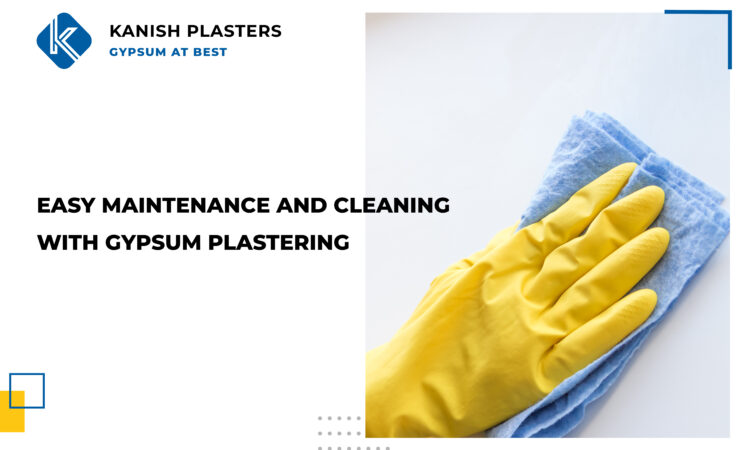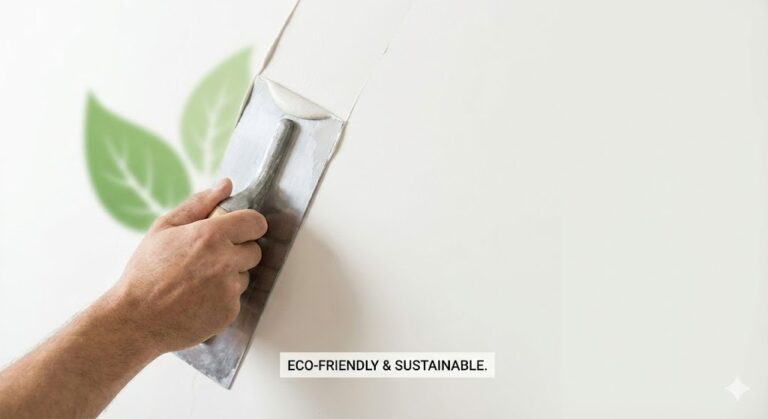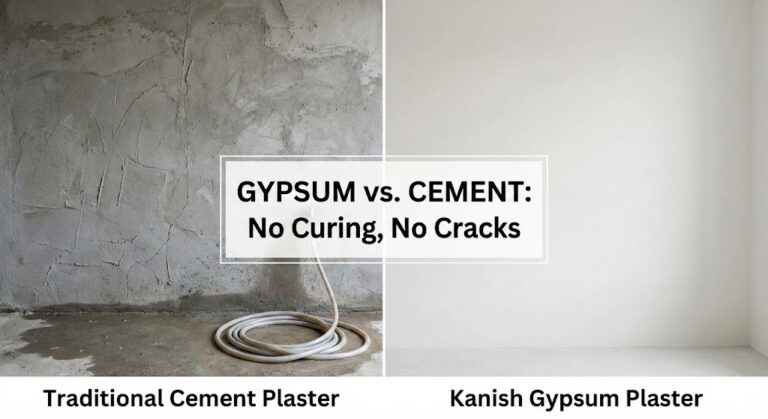Whenever one plans and constructs a building, it is crucial to consider the maintenance and cleaning aspect of the walls (for a later point in time). This follows that the material used for plastering the walls should be such that one must maintain and clean them in a hassle-free manner. For this very purpose, one should employ gypsum for a wall(s) to plaster them.
Let us begin by going through a few of the properties of gypsum plaster that make it helpful in making the maintaining and cleaning process so easy:
-
Gypsum plaster walls save the time of construction
One of the worthiest reasons to use gypsum plaster walls is it reduces the time of construction considerably. Therefore, if one ever needs to renovate their building (or even if it is just a regular maintenance drill), one doesn’t have to wait through long periods to see the desired results.
For instance, if one’s house has walls made up of the more usual sand cement plaster, they would have to wait for at least 21 days (3 weeks, according to Source) to water cure (that is, supply the walls with a sufficient amount of water to allow the cement to set in properly) the walls, and any subsequent work to be done on the walls would have to wait until water curing has been completed. Thus, the time for maintenance (or renovation) drops sufficiently.
-
Gypsum plaster walls are extremely less or not prone to cracks (that occur due to shrinkage) compared to sand cement plaster
The walls plastered with gypsum are incurred next to zero cracks due to shrinkage. This factor makes it sufficiently easy for the concerned to repaint the walls with minimal hassle. Thus, again, it makes the process of renovation and maintenance extremely easy. On the contrary, the regular sand cement plastered walls are highly prone to cracks, which, in turn, makes the surface of the walls greatly uneven; thus, it becomes a tedious job to repaint the walls at a later period.
-
Gypsum plaster does not considerably affect or chemically react with paints
This is yet another one of the great qualities of gypsum plaster (according to Source). Since gypsum plaster does not react with paints, it does not trigger any alkali attack on the walls. This, in turn, keeps the cost, and at the same time, the amount of effort required on maintenance and repairs to a minimum.
-
Gypsum plaster is greatly resistant to high temperatures
Gypsum plaster, having a rich water content inherently, is highly resilient against high temperatures; this makes it the perfect building material to employ in areas prone to fire hazards. In the unfortunate case of an accidental fire(s), the usual cement plasters are likely to crack, and their bond with the walls will be very likely to be severed; on the other hand, gypsum plaster protects concrete, steel, etc. and makes it convenient in the future to work on the maintenance and recovery of the structure (as per Source).
-
Gypsum plaster is effective against microbes such as fungi, moulds, etc.
While the regular sand cement plaster cannot keep the microorganisms such as fungi at bay, gypsum plaster has been proven to be safe against fungi; moreover, it tends to repel insects (according to Source). Therefore, in the longer run, one can rely on gypsum plaster for easy maintenance and cleaning purposes.
-
Gypsum plaster can be easily cleaned using a wet cloth
After the construction of a structure has been finished, it often happens that it becomes quite taxing to clean the spots left from plastering the walls (this happens if one has employed the usual sand cement plaster). However, if one chooses to employ gypsum plaster, the process of wiping and cleaning the stains poses no problem at all. All one has to do is take a wet cloth and wipe the stains off the floor (or any other surface).
-
Gypsum plaster walls are highly resistant to corrosion
Unlike sand cement plaster that is vulnerable to rusting and corrosion processes, gypsum plaster offers high corrosion resistance. This gives it a certain stronghold concerning maintenance because it helps protect the internal electrical wiring, metals, etc. Thus, gypsum plaster reduces the cost of frequent maintenance, and simultaneously, increases the lifespan of the inner fittings and other materials like steel and so on (as per Source).
-
Gypsum plaster is less dense than cement plaster
The sand cement plaster density is greater than that of gypsum plaster, so it places comparatively more strain on the building. Hence, gypsum plaster being light in weight lessens the overall dead load of the building. This, in turn, reduces the requirement of maintenance to a certain extent (according to Source, gypsum weighs about as less as half of the usual plaster).
-
Gypsum plaster provides a given place with remarkable acoustics
As per a source, gypsum plaster walls offers a given place great acoustics; that is, the given room (or place) is less prone to echoes, and at the same time, it remains shielded from the noise outside. The primary reason behind this property is that gypsum has a fairly high Sound Absorption Index (as per Source, the Sound Absorption Coefficient for gypsum is 0.5 to 0.7, whereas the same for regular plaster is 0.01 to 0.03).
Now if you are familiar with the advantages of gypsum plaster over the usual and traditional sand cement plaster, we are sure that you would want to make your decision with due consideration. However, you can always get in touch with Kanish Plasters for some of the finest quality gypsum plaster and related assistance.
Go ahead and contact Kanish Plasters now to witness how gypsum plasters can bring about the beauty at your place!



